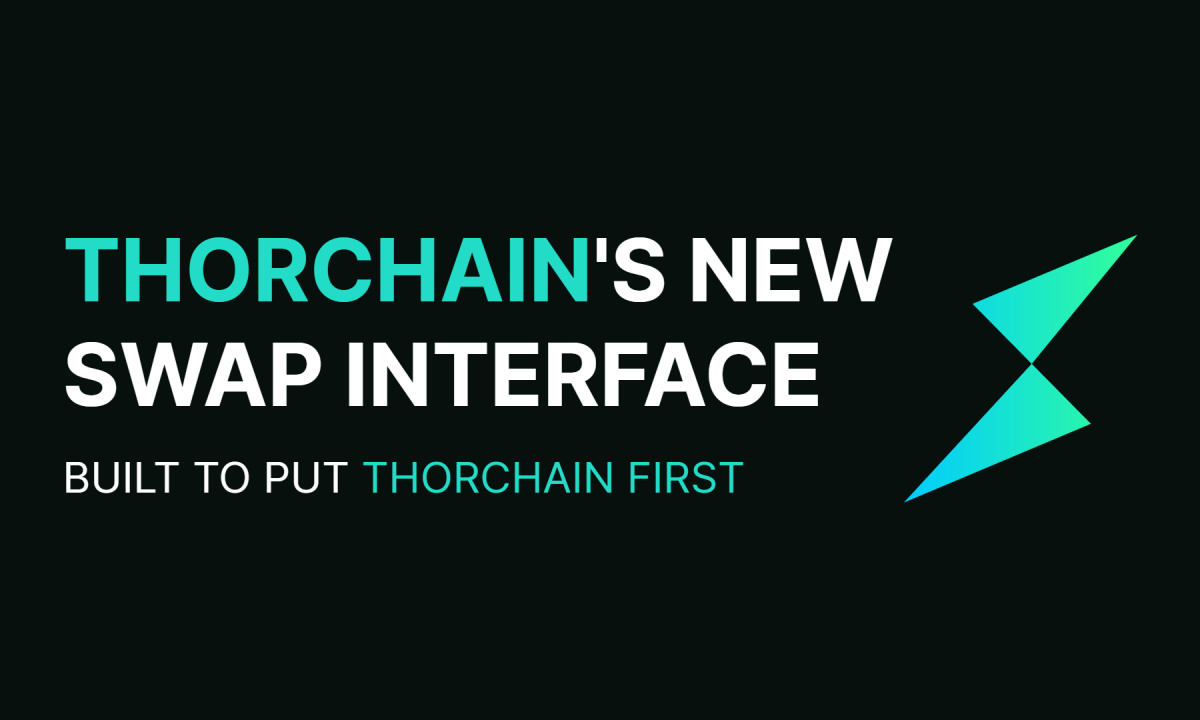Saga Review: Layer 1 Blockchain Supports The Infrastructure To Build dApps
Saga is the next project on the Binance Launchpool, following Ethena, which offers blockchain development services for decentralized applications. The initiative offers consumers and developers the high-end tools and assistance they require to realize the Web3 vision. Let’s learn about this project with Coincu through the Saga Review article.
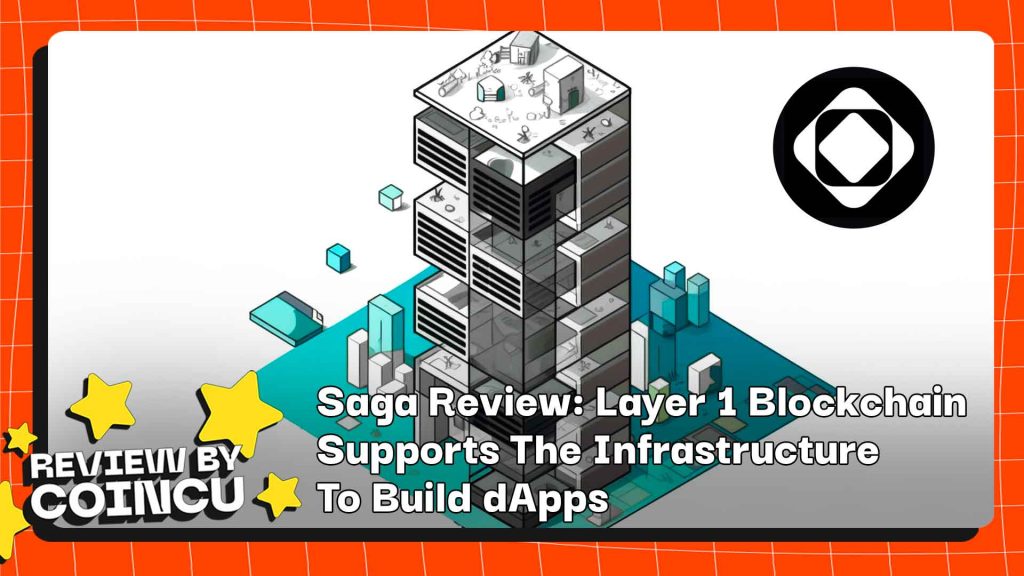
What is Saga?
Saga is a Layer 1 project in the blockchain space that aims to revolutionize application development through its unique offerings.
At its core, Saga provides blockchain-building services, enabling the creation of specialized blockchains known as “Chainlets” within its ecosystem. These Chainlets are secured through Interchain Security, a robust mechanism borrowed from Cosmos that ensures reliability and integrity.
The project streamlines the deployment process by integrating advanced validators and standardized, automated CI/CD workflows across various blockchain virtual machines.
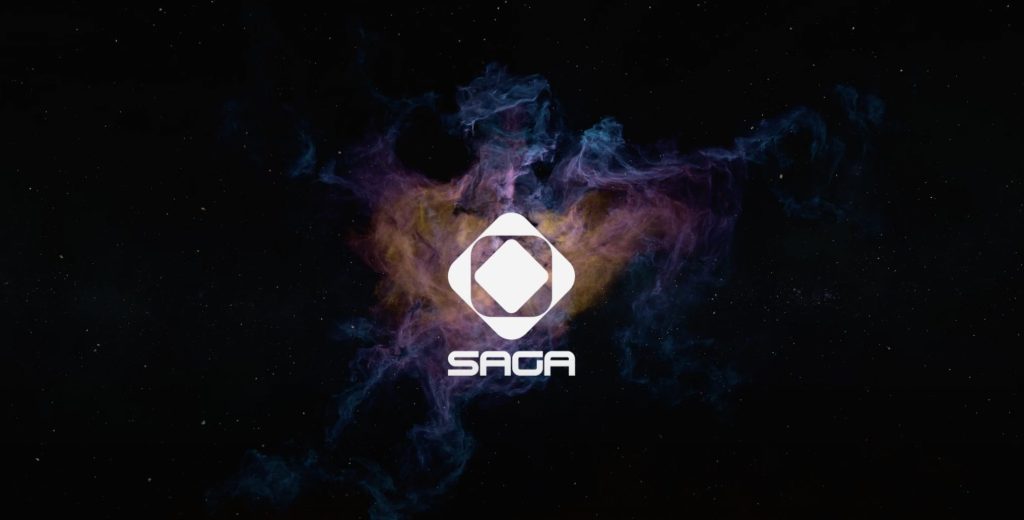
In addition to its development tools, Saga prioritizes user satisfaction by offering premium support, catering to both developers and end-users alike.
With SagaOS, an integrated “stack” for Web3 application development, the project further enhances its ecosystem’s capabilities, providing a comprehensive solution for building and deploying blockchain-based applications. Saga’s overarching goal is to establish a vibrant multi-chain ecosystem, with each network catering to specific market segments such as gaming and NFTs.
Read more: AEVO Review: Binance Launchpool’s 48th Project
Saga highlights
Innovator Program
As of April 1, 2024, Saga, has seen an impressive uptake in its Innovator Program, with over 350 projects now part of its ecosystem. This initiative, aimed at fostering innovation and collaboration within the blockchain space, has gained significant traction, showcasing the growing interest in decentralized technologies.
A staggering 80% of the projects enrolled in the program are dedicated to gaming, underscoring the industry’s robust presence within Saga’s ecosystem. Additionally, approximately 10% of projects focus on NFTs and entertainment, with another 10% dedicated to decentralized finance (DeFi) solutions.
Diversity of cooperation
In a bid to further expand its infrastructure and capabilities, Saga has announced strategic partnerships with prominent layer-1 protocols. These partnerships aim to leverage Chainlets, a groundbreaking feature that enables Saga to extend its infrastructure by automating various processes with partner protocols. The alliances include collaborations with:
- Polygon: Enabling Saga to automate Polygon CDK chains.
- Avalanche: Facilitating the automation of Avalanche Subnets through Saga.
- Celestia: Introducing decentralized aggregations with Celestia DA, streamlined through Saga’s platform.
- MarbleX: Providing scaling infrastructure for the MarbleX chain, enhancing its capabilities.
Com2uS: Supplying scaling infrastructure for the Com2uS chain, bolstering its performance.
Saga Origins
March 2024 marked a significant milestone for Saga with the launch of Saga Origins, a dedicated game publishing division committed to delivering high-quality, cutting-edge games to the market. This initiative underscores Saga’s commitment to supporting developers and fostering innovation within the gaming sector.
Saga Origins aims to provide a comprehensive suite of services, including strategic partnerships with influencers, user acquisition campaigns, community-building initiatives, and advertising support. By offering a collaborative approach, Saga Origins seeks to propel gaming projects into the global mass market, driving adoption and engagement.
Pegasus Incentivized Testnet
Saga’s Pegasus Incentivized Testnet, released in Q4 2023, has achieved remarkable success, setting new records within the blockchain community. This testnet serves as a testament to Saga’s dedication to innovation and its vision of revolutionizing the web3 landscape.

Read more: Ethena Review: Breakthrough Stablecoin Solution On Ethereum
How Saga works
Saga is underpinned by three fundamental components: the Security Chain, Platform Chain, and Chainlets.
Security Chain
At the core of Saga’s operational framework lies the Security Chain, serving as the primary bastion of security within the protocol. Here, SAGA tokens are staked, forming the bedrock of the protocol’s security infrastructure. Built on the Cosmos-SDK platform, the Security Chain establishes a fortified layer of protection, safeguarding the integrity and reliability of the entire Saga ecosystem.
Platform Chain
The Platform Chain serves as the nexus for developers seeking to launch and maintain their Chainlets—customized blockchains tailored to specific applications and use cases. Functioning as an aggregator of security from various Security Chains, the Platform Chain channels this collective security to the launched Chainlets, ensuring robust protection against potential threats and vulnerabilities.
Chainlets
Operating at the forefront of user interaction, Chainlets represent the decentralized hubs where transactions are processed and validated within the Saga ecosystem. Designed to uphold the highest standards of integrity and reliability, Chainlets serve as the backbone of decentralized applications, facilitating seamless user engagement and transaction execution.
In the event of fraudulent activity, tokens staked to operate Chainlets are subject to confiscation, underscoring Saga’s commitment to maintaining a secure and trustworthy environment for all participants. Chainlets are constructed on versatile platforms, including the Cosmos-SDK, Avalanche Subnets, and Polygon Supernets, enabling developers to harness a diverse array of tools and functionalities to suit their specific needs and preferences.
Read more: Dymension Review: Layer 1 Blockchain Promotes Interaction With Cosmos
Feature of SAGA
Chainlets
A Revolutionary Solution for VM-Compatible Blockchain
With a focus on ease of use, decentralization, and security, Chainlet presents developers with a novel approach to implementing application-specific blockchains, offering unprecedented autonomy in selecting their preferred virtual machine (VM).
Notably, Chainlet’s inaugural support extends to the Ethereum Virtual Machine (EVM), with plans for future compatibility with an array of VMs, including CosmWasm and JavaScript VM, thereby ensuring developers’ flexibility in crafting tailored solutions to meet their unique needs.

Features of Chainlet
- Infinite Scalability
- Cost-Effectiveness
- Automation
- Interoperability and Rapid Migration
- Fully Flexible Toolkit
Chainlet boasts infinite scalability through its architecture, where each Chainlet operates as an independent appchain instance, enabling applications to scale seamlessly for optimal performance and speed.
Developers benefit from free transactions and low maintenance fees associated with Chainlet. With the freedom to choose their preferred token model—utilizing their own token, opting for a tokenless approach, or leveraging tokens from other ecosystems—developers can tailor their strategy to suit their specific requirements.
The Musical Chair Auction model determines Chainlet’s maintenance fees, ensuring a fair and transparent mechanism.
Chainlet streamlines the deployment process with its user-friendly Saga WebApp, enabling developers to set up their Chainlets effortlessly with just a single click, thus eliminating the complexities typically associated with blockchain deployment.
Emphasizing interoperability, Chainlet facilitates seamless asset transfers not only within its ecosystem but also between Saga and other blockchain ecosystems.
Through automatic interoperability and wireless composability synchronization, users can swiftly migrate assets between Chainlets and across different blockchain networks, enhancing flexibility and accessibility.
Offering unparalleled customization capabilities, Chainlet equips developers with a fully flexible toolkit, allowing them to tailor their Chainlets according to their specific preferences and requirements. This flexibility empowers developers to innovate and optimize their applications for maximum efficiency and functionality.
Chainlets launch process
The launching of Chainlets on the Saga platform is entirely devoid of licensing fees, offering developers a straightforward path to implementation. The process revolves around the utilization of SAGA tokens, Saga’s native cryptocurrency, providing developers with a seamless experience akin to popular SaaS platforms such as Amazon Web Services, albeit with a distinctive twist—subscription fees are settled exclusively in SAGA tokens for both the creation and maintenance of Chainlets.
Unlike traditional setups where validators operate on a profit-sharing basis, in the Chainlet ecosystem, validators play a pivotal role in establishing and maintaining the infrastructure, akin to the responsibilities of validators on Cosmos Hub in managing app chains.
To initiate the launch of a Chainlet, developers are mandated to allocate funds to an escrow account using SAGA tokens. It can be pre-funded with any desired amount, ensuring flexibility in managing expenses.

However, it’s imperative to note that Chainlets remain offline until the developer replenishes the escrow account with sufficient SAGA tokens to cover fees. The funding of the margin account with SAGA tokens can be executed through various methods:
Developers can directly deposit SAGA tokens into their accounts to fund their margin.
Alternatively, developers can stake SAGA tokens into an escrow account to cover fees using staking rewards, providing an additional avenue for managing expenses.
Chainlets also allow for contributions from sponsors, community members, and decentralized autonomous organizations (DAOs) to cover fees, fostering a collaborative ecosystem.

Validators determine the registration fee for operating Chainlets. Before each epoch, they submit proposals for the fee they deem appropriate. These proposals undergo a selection process utilizing a unique bidding model dubbed the “Musical Chair Auction,” ensuring fairness and transparency in fee allocation.
Saga Realms
At its core, Saga Realms represents a gateway to innovation, empowering developers to craft custom blockchains endowed with a myriad of functionalities and services.
Through Saga Realms, developers gain access to a versatile toolkit that facilitates the seamless implementation of diverse features, enabling the creation of blockchain ecosystems optimized for various use cases and industries.
Saga Origins
Saga Origins is a game publisher developed by the Saga project, Saga Origins is dedicated to offering comprehensive services and collaborative support to game developers, facilitating the seamless launch and global distribution of gaming titles.
Musical Chair Auction
The Musical Chair Auction is a unique process designed to determine the pricing structure for Chainlet operations. In this auction, validators submit their bids, with only a select group of validators, known as the “Winning Set,” securing the lowest bids, thereby earning the privilege to operate the Chainlet. Conversely, validators with higher bids find themselves in the “Losing Set.”
The crux of the auction lies in the final cost determination for operating a Chainlet, which is contingent upon the highest bid within the Winning Set. This means that the validator with the highest bid within this set will have their bid honored, while other validators in the Winning Set not only receive their desired price but also garner additional profit based on their bids.
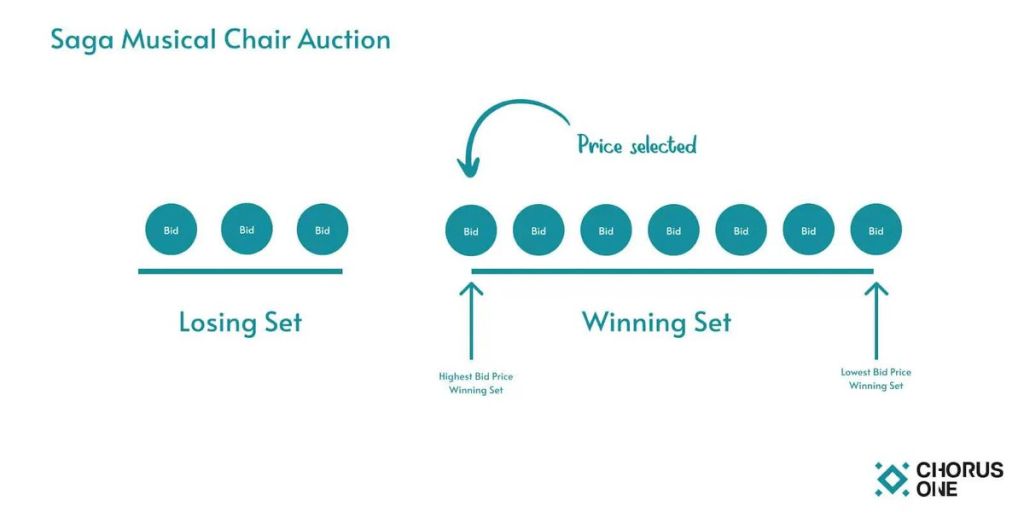
Essentially, the price developers pay validators to operate a Chainlet is predicated on the highest bid within the Winning Set, augmented by an additional profit component.
However, it’s imperative to acknowledge that the Musical Chair Auction also introduces inherent risks for validators. The auction’s design is intricately crafted to incentivize validators to submit the lowest possible bids, thereby rewarding those in the Winning Sets while penalizing validators relegated to the Losing Sets.
Saga’s core values
As the mass adoption of blockchain technology continues to gain momentum, Saga embarks on its next mission: to bolster and support the next wave of innovation within the gaming and entertainment sectors by facilitating the creation of 1,000 dedicated chains.
With the burgeoning demand for blockchain-based solutions across industries, developers are increasingly recognizing the importance of robust infrastructure that can seamlessly support the development and deployment of applications for end-users.
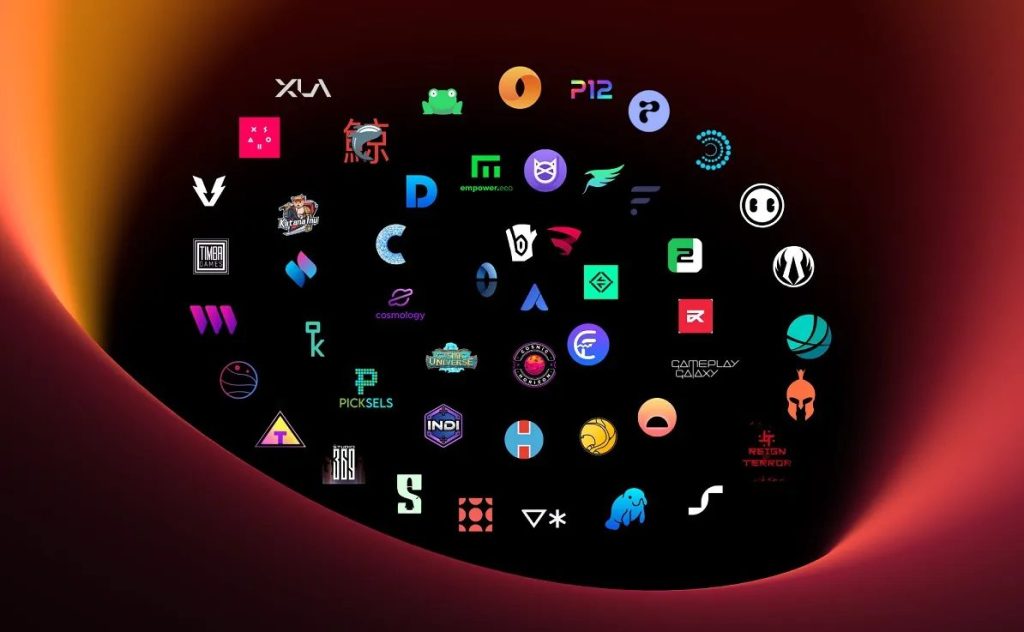
Recognizing this need, Saga is committed to providing developers with the requisite infrastructure that is infinitely scalable, interoperable, and cost-effective, thereby laying the groundwork for the widespread adoption of blockchain technology in gaming and entertainment.
At the heart of Saga’s mission lies the imperative to empower developers with the tools and resources needed to usher in the next generation of applications on the blockchain. By offering on-demand dedicated block space that is characterized by scalability, high performance, and fast bridges to other ecosystems, Saga ensures that developers have access to end-to-end infrastructure that meets the evolving demands of the industry.
Read more: Space ID Review: Build Domain With Many Outstanding Features
Saga Tokenomics
Key Metrics
- Token name: Saga
- Ticker: SAGA
- Blockchain: Saga Security Chain
- Token type: Utility, Governance
- Total Supply: 1,000,000,000 SAGA
- Initial Supply: 90,000,000 SAGA.
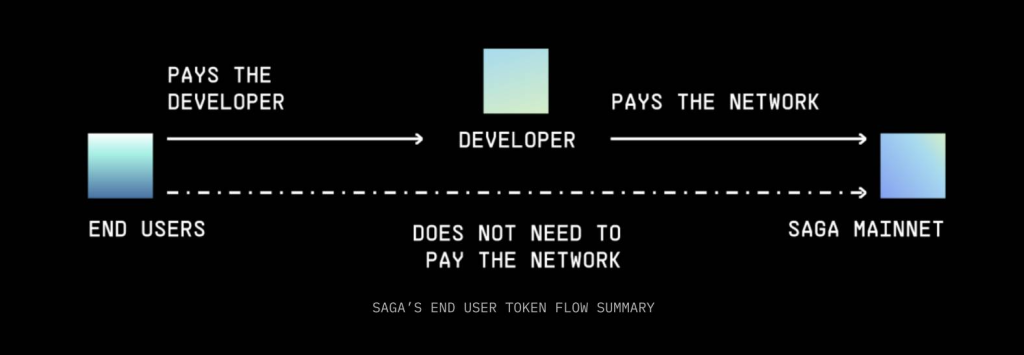
SAGA allocation
- Binance Launchpool: 4.5% of total supply
- Airdrop: 15.5% of total supply
- Investors: 20% of total supply
- Core Contributors: 20% of total supply
- Foundation Reserve: 10% of total supply
- Ecosystem and Development: 30% of total supply.
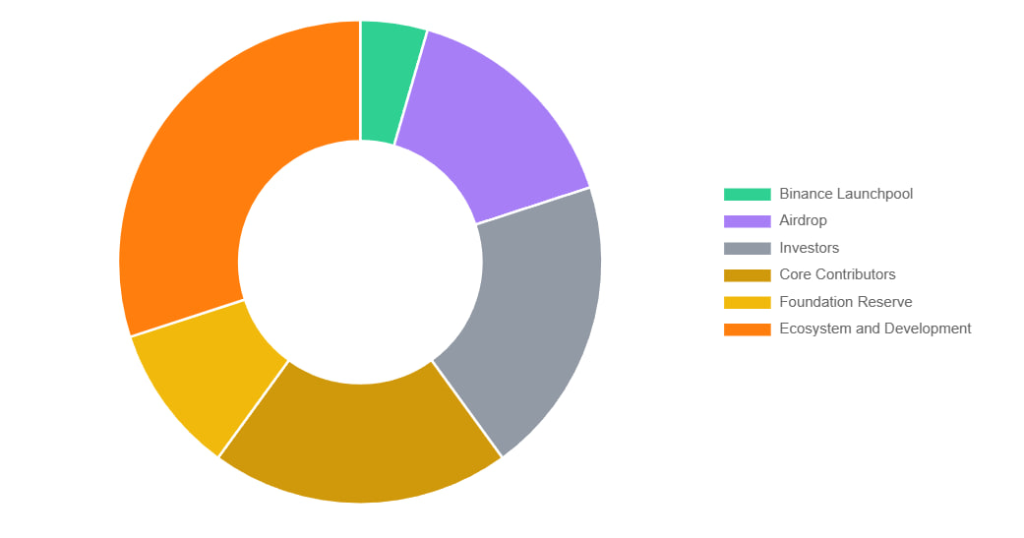
Token Release Schedule

Use Case
SAGA token is used for:
- Payment for Chainlets: Developers pay SAGA tokens to network validators to initiate and maintain their Chainlets.
- Staking: Users who stake to help secure the network will receive rewards in the form of SAGA tokens and tokens of projects built on the Saga protocol.
- Governance: SAGA holders will have the right to vote on governance decisions within the platform.
Team and Investors
Team
- Rebecca Liao, formerly the Co-founder and CEO of Skuchain, is credited with elevating the company to annual sales exceeding $5 billion. Presently, she serves as an Advisor to the Sommelier Protocol, focusing on crafting a DAO for optimized governance and regulatory compliance.
- Jacob McDorman assumes the role of Chief Technology Officer (CTO), bringing over a decade of entrepreneurial and research experience in product development. With a pragmatic vision, McDorman’s past roles as a business founder, development studio owner, and consultant underscore his versatile skill set.
- Jin Kwon, appointed as Chief Strategy Officer (CSO), has been a pivotal figure in the Cosmos ecosystem since 2018. Holding significant positions at Tendermint, Kwon’s background spans engineering, sales, marketing, and finance. He champions the integration of web3 technology into mainstream applications.
- Bogdan Alexandrescu, serving as Vice President of Engineering, contributes a wealth of technological acumen. His tenure at Apple Inc. and involvement in extensive projects encompassing machine learning and artificial intelligence underscore his leadership in the technology and fintech sectors.
Investor and Partners
With a total of $11.5 million in investment, Saga has finished two rounds of seed funding. Investment funds and companies like placeholder, Samsung Next, GSR, Longhash Ventures, Maven11, Hypersphere,… are involved in these financing calls.

The majority of Saga’s strategic partners are from Layer 1 blockchains, as the project’s goal is infrastructure expansion. Among Saga’s strategic allies are Marble X, Com2uS, Polygon, Avalanche, and Celestia.
The Roadmap of Saga
Q1 2024
- Mainnet Phase 1: Launch Security Chain and TGE
- Mainnet Phase 2: Basic Cross-Chain Validation Enabled
- Mainnet Phase 3: Chainlet started using the security mechanism from Saga
- Mainnet Phase 4 and 5: Validator begins participating in transaction validation for Saga
- Mainnet Phase 6:
- Saga Protocol V1
- Saga Protocol V2
Q2 2024
- Mainnet V2 Sub-release 1
- Mainnett V2 Sub-release 2
Conclusion of Saga Review
Saga is a decentralized application blockchain development solution. It has a lot of promise in the current industry because it can offer users optimized blockchain services and solutions, allowing the incorporation of virtual machines into a personal blockchain.
Because of this, developers find the platform’s infrastructure particularly appealing, as they must constantly strike a balance between elements like security and decentralization. Still, Saga might not experience extreme FOMO when it is first listed because it is situated in a very small narrative, especially when it comes to projects that are part of the Binance Launchpool. Hopefully, Coincu’s Saga Review article has helped you get more information about the project.
| DISCLAIMER: The information on this website is provided as general market commentary and does not constitute investment advice. We encourage you to do your own research before investing. |














